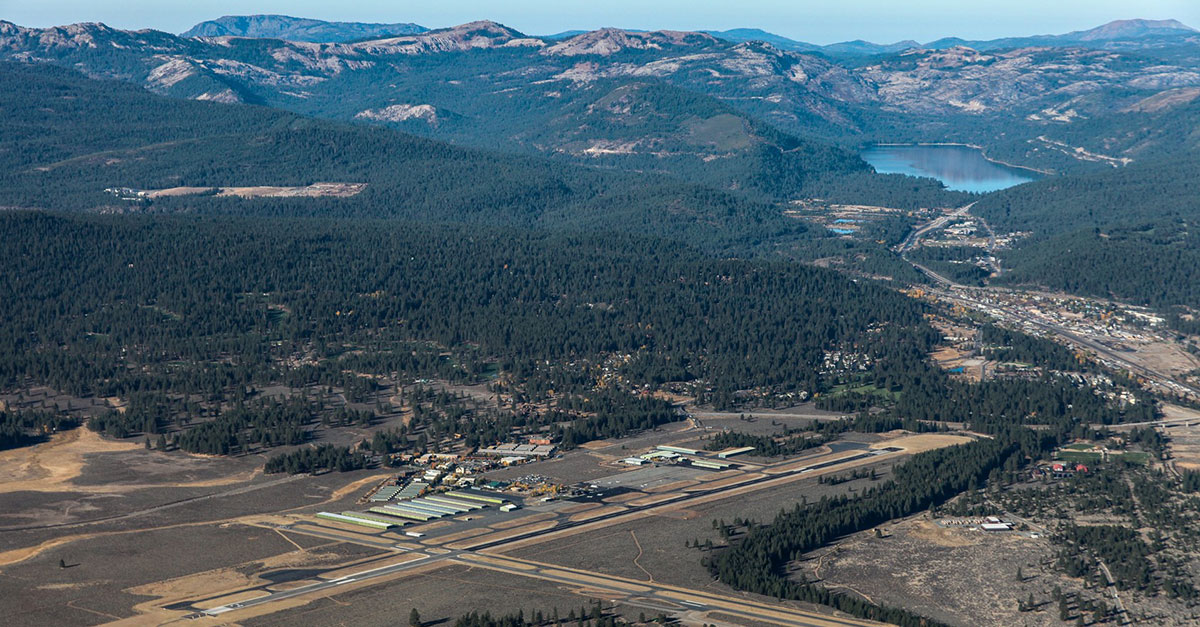
April 26, 2018
At Truckee Tahoe Airport (TRK) in Northern California, the benefits of NextGen and a public-private partnership have combined to enhance services and safety for aircraft operators, while at the same time decreasing the impact of noise on the surrounding community.
This win-win has largely been possible because of utilization of new NextGen technologies and the willingness of the airport district to use airport-generated funds to help pay for equipment upgrades.
A busy mountain airport in challenging terrain and near a growth- and noise-sensitive community, Truckee Tahoe has evolved over the years from an airport used primarily in the winter and summer to a year-round destination that hosts a large number of turboprop and jet aircraft. “In the summer, we can have more than 500 operations daily,” said Hardy Bullock, director of aviation and community services.
TRK has been proactive in addressing the concerns of the local community, including implementation of a voluntary curfew from 10 p.m. to 7 a.m. and rolling out a TRK familiarization program, which includes a free flight with a local certified flight instructor. The airport also paid for a temporary control tower, which has been in service daily since June 2017, and is working with the FAA to become part of the contract tower program, which would help fund a permanent tower.
Airport operations also have been enhanced and safety increased by the development of departure and arrival procedures for each runway. “These new procedures allow another layer of predictability and safety for the business traveler,” said Bullock.
Finally, TRK officials, in conjunction with the FAA and Harris Corp., are in the final stages of implementing an ADS-B ground station. The airport district is planning on paying for the installation, which will provide NextGen-capable surveillance, since radar coverage to the airport ends at 10,000 feet. Bullock says that the plan is to have the ground station operational sometime in 2019, in time for the Jan. 1, 2020 ADS-B equipage deadline.
“As our airport continues to experience growth and change, delivering safe, reliable access to the airport for business aviators is paramount,” said Bullock.
Heidi Williams, NBAA’s director of air traffic services and infrastructure, noted, “TRK is a good example of how an airport sponsor and manager are working collaboratively to enhance services while utilizing ADS-B and performance based navigation procedures to ensure business aviation access to this airport.”


 International Business Aviation Council Ltd.
International Business Aviation Council Ltd.